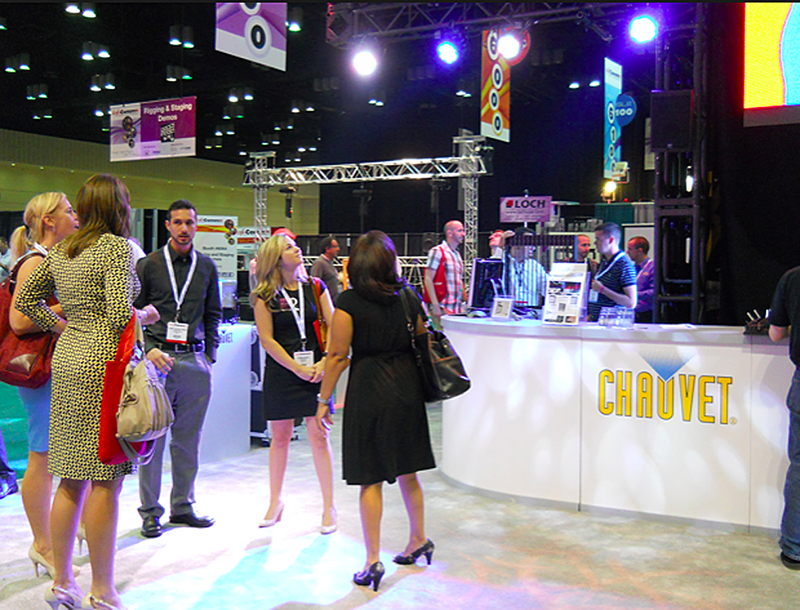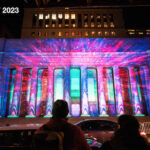
It’s been a while since we’ve taken stock of where we’re at and where we’re headed in the LED video panel market. It’s no secret the LED video market has experienced significant growth over the past couple of years, and it shows no signs of slowing down anytime soon. You’d be hard pressed to find another product in the AV industry that has experienced as much rapid growth as LED panels. I’m not just talking about concert touring and live event applications — LED video is everywhere. It’s revolutionizing the way people are communicating messages in every sector — airports, corporate meeting rooms, schools and houses of worship, just to name a few.
From 2000-2008/9, the space was dominated by a few notable brands, namely Barco, Lighthouse and Daktronics. There were certainly some other viable options at the time, but those three were leading the way. During this time, well, let’s just say, things were a mess. The big three hung on as long as they possibly could, but ultimately the “generic Chinese factory” took over. We lived through the rather profitable era that saw most of the big rental houses aligning with a manufacturer they met at a trade show, slapping their sticker on the back of a panel and changing the line items on their quotes from “12 x 20 Barco i6 6mm LED Screen, blackface chip with D320 Processing,” to “12 x 20 LED 6mm LED Screen,” eventually hitting the low point where the line item would just read “12 x 20 LED Screen.” I mean, what’s so important about the pixel pitch that it needs to be called out in the quote, right?
As we got to the middle of this phase, the entire market thought it was easy. Go to the show, pick a booth, order some plastic, get some stickers. “Hey, we’re a brand! We’re a brand!” If you were a big boy you might actually get on the plane and go to China and put your boots on the ground to see what was behind your shiny new brand, but most didn’t. Most just ordered with crossed fingers. The winners were the ones that actually got involved with the design decisions that the manufacturers were making. The packaging of the product was key. The rookies had no clue, they still don’t. A box is a box is a box.
The Brand is Back
Now, we’re a year or two or three (I’m honestly losing track of time) into the next phase. The brand is back. It took the manufacturers a long time to figure out what matters to the customers of the world, and a lot of them have been successful because of this revelation. Okay, let’s drop a few names- (in no particular order) Unilumin, Absen, ROE.
INFiLED, RocketSign, Leyard, ESDlumen, Triton (formerly Oracle), Liantronics, YesTech, AOTO/G-Tek, Coleder, Vanguard. They are all staking a claim in the rental and installation market. They are separating themselves from the pack, and believe me when I say the pack is huge. That’s just 11 companies, there are hundreds more. When you go to your next trade show, you’ll see a typical 40 or 50 booths that can sell you an LED panel. If you go to a show in China, you’ll see hundreds. They are not all created equal, not by a long shot. There are mostly imitators, surrounded by a few of the rare innovators.
For the past few years, all they could do was feed us higher and higher resolutions. To put it bluntly, they rushed it. If any of you have had the pleasure of deploying 3 point anything, or 2 point anything, you know that the products are super fragile and temperamental in their build. In addition to the fragility, we’ve had the new challenge of pushing content to all of those pixels. Many of the folks in the food chain (I’m talking to YOU Mr. and Ms. Production Manager) have ignored this fact, and they overlook the firepower that is required on the front end (and the content creation side) to feed these new high- resolution displays. That calls for an entirely new investment in processing, routing, switching, playback and media servers.
We’ve seen the fads. They used to be annual, now they seem to be happening at a rate of two a year. Magnesium Alloy frames, carbon fiber, floors, transparency, touring frames, touring carts, etc. Last summer was particularly entertaining when it came to touring carts. It’s as though one guy had a design and he simply went door to door in Shenzhen.
“Excuse me, Mr. or Mrs. Factory Owner. I noticed you manufacture LED panels.”
“Why yes, we do. How may we help you?”
“Ah, well, I am an LED expert from a faraway land, and I have designed a custom touring cart and framing solution that I can sell you. This will help you sell to the rental market. No one but no one will buy a new LED panel without a touring system.”
“Ah yes, we have noticed this trend. We agree with you. Your system looks very nice. Can we sell it exclusively?”
“Why yes, yes, of course, it’s exclusive to you.”
“Thank you, this is very exciting! We will begin selling this at once.”
And then everyone showed up at InfoComm with the exact same trick — not very innovative. If you had a good eye for the imitator and the innovator, it wasn’t very difficult to discern between the two. I do feel kind of bad for the folks that invested in what looked like a well-thought-out system on the trade show floor.
The Next Wave of LED Video Innovation
So, here’s the newsflash: I think we’re finally crossing the chasm. I think (okay, fine, I hope) that the next wave of innovation will result in an advancement that can actually help improve the world. That’s right folks — The World! I know, I know, you’re out there saying, “Wow, that’s a pretty lofty prediction. What could they possibly do to improve the world?”
Okay, here’s how I see it. The next wave is going to be focused on durability. It’s as though they’ve been selling us half-baked modules for a decade and have finally come to the realization that if they produce a more durable, long-lasting pixel-mod package, there will be more realistic applications for their products. If they sell a more durable product, they can continue to push the resolutions. I will admit, though, that there will be much slower incremental improvements on pixel pitch, but if they succeed in eliminating the fragility, we’ll see even tighter pixel pitches coming into the rental market.
That’s not always great news, but here’s the thing — these displays are going to last longer. They are going to have significant life cycle improvements, and that is going to equate to less product being sold. (cue the tire screech) Whaaaaaa?
Think of it this way: you’ve got a choice to put a couple hundred thousand into some panels, and five companies produce this new durable technology. FYI, at the moment, there are many monikers for this idea, and they all have some slightly differing technology behind them, there is…GOB (glue on-board), EOB (epoxy on-board- dang, isn’t that the same thing?) AOB (adhesive on-board), FTP (front treatment protection) IMD (blah blah blah), just to name a few. My assumption is we’ll only have a few brands to choose from, because the big brands have invested a lot of money into their R&D, and they are going to do their best to protect this IP as long as possible.
On the other hand, if all of the innovation lies in the hands of the chip companies, the ones that develop the LED packages, the diodes… then not much will change and we’ll see a new LED company every few hours until the magic hologram display I’ve been waiting for is finally released by Google. I cannot wait for that…I can sell all of our trucks. Either way, less choice equals less competition… which means the price goes up. Price goes up means fewer customers, which equates to less product being produced, which equates to less raw materials being consumed, which equates to finally giving the damn environment a few years off.
Finally, we’re going to give the e-waste dumping grounds a little breather- that’s what I meant by “improve the world.” More resolution, longer life cycles, more profit for everyone who can manage to stay in the game, including the factories. I’m down for that.
Doug Murray is the chief bottle washer at Upstage Video (www.upstagevideo.com)


